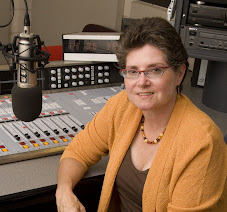This week’s interview was, for me, among the most thought-provoking conversations I’ve had recently. Heather Thompson is a historian who’s writing a book about the Attica prison uprising in 1971, but her research suggests some new ways of thinking about what’s happening with prisons in
I’ve heard lots of discussion about prisons that focus on the poor conditions in which prisoners live. But Thompson takes a different approach; her focus is on how the growing prison system hurts the rest of us. Setting aside entirely the cost of keeping so many people in prison, large-scale incarceration has other social and economic costs. It breaks up families and communities, creates economic incentives for business and communities to maintain or even increase crime rates, and reduces the number and quality of jobs available to those who are not in prison.
The first point seems somewhat obvious: when a parent or spouse is in prison, the family suffers, and when people who might otherwise contribute to community life are in prison, the community suffers. No doubt, some of those who are in prison were not model parents or citizens, but in prison, whatever ties prisoners, their families, and their communities may have had get broken. This happens in part because the private prison system often sends criminals to prisons far from their families, making it impossible for them to maintain relationships that might help them return more successfully to the community when their sentences end. Add to that the loss of any income they might have contributed to the family, taxes they might have paid locally, and prison conditions that encourage mental illness and asocial behavior, and we have a system that seems to be designed not to rehabilitate prisoners but rather to ensure that they will return to prison soon after they are released.
And that’s just one way the current prison system ensures that crime will not be decreased. As the private prison system grows, with publicly-owned companies that have stockholders demanding ever-increasing profits, the prison industry has an incentive to incarcerate more and more people. They need crime to go up in order to prosper as a business. So do local governments, which often view prisons as a source of economic growth. It’s strange enough, I think, to view prisons as economic opportunities, but it’s even worse to realize that this means that it’s in our interests to have more crime, not less. Now that’s twisted.
Finally, Thompson points out that prisoners are increasingly working for private firms, earning much less than minimum wage (try 21 cents an hour), doing jobs that might otherwise go to people who have not committed crimes. Prisoners make clothing, auto parts, and other goods. They stock shelves at major retailers and take telephone orders in call centers. Of course, free people can’t compete for these jobs, not only because the contracting process excludes them, but also because they can’t work for $2 an hour. Indeed, the Federal Prison Industry program admits that non-prison employment has declined in some of the sectors that use prison labor. So again, business has an incentive to see crime rates maintained or increased, and giving jobs to prisoners takes jobs away from others. Companies make larger profits, but ordinary people miss the opportunity to work for a decent wage.
The whole thing seems wildly contradictory to me. We changed the laws to put more people in prison in order to make
